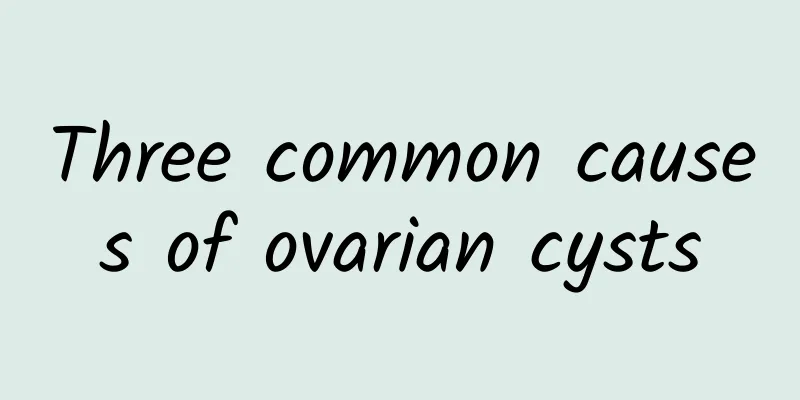Ways to prevent recurrence of pelvic peritonitis include

|
Pelvic peritonitis is a common gynecological disease. The incidence of this disease is very high, especially for women who have had sex. If it is not treated in time, it may turn into cancer, so timely and effective treatment is very important. Western medicine is usually used to treat this disease. So, what are the ways to prevent the recurrence of pelvic peritonitis? 1. Drug treatment: Antibiotics are the main treatment for acute pelvic peritonitis, including intravenous infusion, intramuscular injection or oral administration. Broad-spectrum antibiotics should be used in combination with anti-anaerobic drugs, and attention should be paid to the duration of treatment. It can also be combined with traditional Chinese medicine treatment to achieve better results. 2. Surgical treatment: 1. Ineffective drug treatment: If the body temperature of fallopian tube, ovarian abscess or pelvic abscess does not drop after 48 to 72 hours of drug treatment, the patient's poisoning symptoms worsen or the mass increases, surgery should be performed in time to avoid abscess rupture. 2. Persistent abscess: If the condition improves after drug treatment and the inflammation is controlled for several days (2 to 3 weeks), and the mass has not disappeared but has become localized, it should be surgically removed to avoid another acute attack in the future or the formation of chronic pelvic peritonitis. 3. Abscess rupture: Sudden worsening of abdominal pain, chills, high fever, nausea, vomiting, abdominal distension, refusal to press the abdomen or toxic shock should be suspected of abscess rupture. If abscess rupture is not diagnosed and treated in time, the mortality rate is high. Therefore, once abscess rupture is suspected, laparotomy should be performed immediately while treating with antibiotics. The surgery can be performed by abdominal surgery or laparoscopic surgery according to the situation. The scope of the surgery should be comprehensively considered based on the scope of the lesion, the patient's age, and the general condition. The principle is to remove the lesion. Young women should try to preserve ovarian function and use conservative surgery as the main method; for older women, those with bilateral adnexal involvement or repeated adnexal abscesses, total hysterectomy and bilateral adnexectomy should be performed; the scope of surgery for extremely weak and critically ill patients with pelvic peritonitis should be determined according to the specific situation. If the pelvic abscess is located low and protrudes into the posterior vault of the vagina, it can be incised and drained through the vagina, and antibiotics can be injected at the same time. In short, you should treat pelvic peritonitis correctly after suffering from it. Don't be nervous. Just go to the hospital for a check-up. According to your condition, choose the treatment method that suits you under the guidance of a doctor. Do not treat it blindly. The above is a detailed introduction to "What are the effective methods of Western medicine to treat pelvic peritonitis?" I hope it will be helpful to everyone. Once you unfortunately get pelvic peritonitis, you must choose the correct method to actively treat it, so as to avoid worsening of the disease and making treatment more difficult. |
<<: Why does pelvic peritonitis recur?
>>: Is pelvic peritonitis hereditary?
Recommend
First case! New Taipei City found ractopamine in hamburger meat
The New Taipei City Health Bureau conducted a ran...
Is it okay to have an abortion at 45 days of pregnancy? What should I pay attention to after the abortion?
After a woman has her menstruation, she has the c...
What are the taboos in life with pelvic inflammatory disease
Pelvic inflammatory disease is a common disease a...
Why do uterine fibroids recur?
Why do uterine fibroids recur? Uterine fibroids a...
How to use medicine to treat candidal vaginitis during pregnancy
Patients with candidal vaginitis generally feel t...
What is a giant uterine leiomyoma? Is it necessary to remove the uterus if the uterine leiomyoma is too big?
What is a giant uterine leiomyoma? Is it necessar...
What is the cause of vulvar leukoplakia?
What is vulvar leukoplakia? What is the cause of ...
Are cervical precancerous lesions dangerous?
The uterus is very important for women. It is the...
What foods are good for adenomyosis?
For patients with adenomyosis, diet can be used a...
What causes dysmenorrhea that women should know
In real life, many female friends feel abdominal ...
Symptoms and causes of female cervicitis Introduction to the three major treatment methods for female cervicitis
Cervicitis is a female gynecological disease that...
How to cure cervical erosion
How to cure cervical erosion? Cervical erosion ge...
Can pelvic peritonitis be cured?
Pelvic peritonitis brings great pain to women, an...
Attention, overworked people! Preventing "Winter Melon-type" Obesity
■ Where is fat Compared with the first three body...
What are ovulation bleeding symptoms?
Ovulation bleeding refers to minor vaginal bleedi...









